LAB REPORT
Science and Technology Making Headlines
June 10, 2016

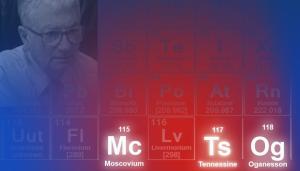
A public comment period has opened for the recommended names of new elements 115, 117 and 118.
Names are elemental
The International Union of Pure and Applied Chemistry (IUPAC) opened a public comment period this week for the recommended names of elements 115, 117 and 118.
Lawrence Livermore National Laboratory and the Joint Institute for Nuclear Research (JINR) in Dubna, Russia were credited late last year for discovering elements 115 and 118. LLNL, JINR, Oak Ridge National Laboratory (ORNL), Vanderbilt University and the University of Nevada, Las Vegas were credited with the discovery of element 117.
Moscovium (Mc) is provisionally recommended for element 115 in recognition of the Moscow region. Tennessine (Ts) is proposed for element 117, recognizing the contribution of Tennessee research centers ORNL, Vanderbilt and the University of Tennessee. The provisional name for element 118 is Oganesson (Og) in recognition of the pioneering contributions of Yuri Oganessian to superheavy element research.
The provisional names will undergo a statutory period for public review before the names and symbols can be finally approved by the IUPAC Council – likely later this year.

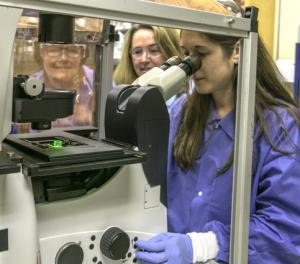
A team of scientists and engineers at the Laboratory is developing “human-on-a-chip,” a miniature external replication of the human body, integrating biology and engineering with a combination of microfluidics and multi-electrode arrays. Photos by Julie Russell/LLNL
Chipping away at animal testing
Each year, millions of rats and mice die for the sake of human safety. But that could change if researchers could predict the impacts of potentially harmful chemicals, viruses or drugs on human beings without resorting to animal or even human test subjects.
To help achieve that, a team of scientists and engineers at Lawrence Livermore National Laboratory is developing a “human-on-a-chip,” a miniature external replication of the human body, integrating biology and engineering with a combination of microfluidics and multi-electrode arrays.
The project, known as iCHIP (in-vitro Chip-based Human Investigational Platform), reproduces four major biological systems vital to life: the central nervous system (brain), peripheral nervous system, the blood-brain barrier and the heart.

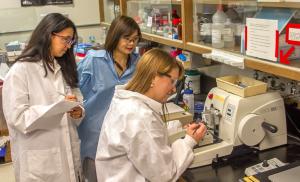
Lawrence Livermore scientist Nicole Collette (right) makes bone sections on the microtome tool while Deepa Murugesh (left) records data and Cristal Yee observes. Photo by Julie Russell/LLNL
Cracking the fracture healing gene
Scientists at Lawrence Livermore National Laboratory, University of California, Merced and Davis, Indiana University and Regeneron Pharmaceuticals Inc. have identified a gene involved in the fracture healing process that could lead to the development of new therapeutic treatments for difficult-to-heal injuries.
Fracture healing involves communication between bone, muscle, vasculature and the thin membrane covering the outer surface of bones (periosteum) during the fracture repair. The periosteum contains stem cells that migrate to the fracture site and differentiate into chondrocytes (cartilage-forming cells) and/or osteoblasts (bone-forming cells).
However, little is known about the interaction between the periosteum stem cells and the bone cells during fracture healing. The team identified the “Sostdc1” gene as a regulator of periosteum stem cells activity during fracture repair.

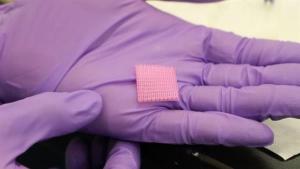
A sponge-like material containing a baking soda ingredient is being tested as a means of capturing carbon.
Mopping up carbon dioxide
Researchers at Lawrence Livermore National Laboratory believe that 3D printed materials filled with sodium carbonate could be used to capture carbon dioxide (CO2) emissions. To demonstrate their hypothesis, the researchers have already developed a small capsule version of the technology. They are now moving to a tiny sponge.
Is there anything baking soda can’t do? Otherwise known as sodium bicarbonate, baking soda seems to be a million things at a time: an essential ingredient in cakes, an effective form of pest control and a toothpaste ingredient, amongst other things. Now, according to a group of LLNL researchers, baking soda could even save the planet.
The scientists created a number of microcapsules consisting of a liquid solution of sodium carbonate, surrounded by a permeable polymer shell. The capsules, which look like tiny blue balls, are placed in an aqueous solution, and turn yellowish brown when in contact with CO2. This happens as the sodium carbonate and CO2 react to form sodium bicarbonate: baking soda. Although the microcapsules are small, 3D printing could be used to recreate the technology on a larger scale, where it could be fitted above chimneys.

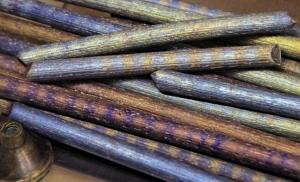
Europium, a rare earth element that has the same relative hardness of lead, is used to create fluorescent lightbulbs. With no proven substitutes, europium is considered critical to the clean energy economy. Photo courtesy of the Ames Laboratory
A rare way to jumpstart energy security
Researchers at Lawrence Livermore and Oak Ridge national laboratories and Wisconsin-based Eck Industries have developed aluminum alloys that are both easier to work with and more heat tolerant than existing products.
What may be more important, however, is that the alloys -- which contain cerium -- have the potential to jump-start the United States' production of rare earth elements.
The team is working as part of the Critical Materials Institute, an Energy Innovation Hub created by the Department of Energy (DOE) and managed out of DOE's Advanced Manufacturing Office. The institute works to increase the availability of rare earth metals and other materials critical for U.S. energy security.
Rare earths are a group of elements critical to electronics, alternative energy and other modern technologies. Modern windmills and hybrid autos, for example, rely on strong permanent magnets made with the rare earth elements neodymium and dysprosium. Yet there is no production occurring in North America at this time.
One problem is that cerium accounts for up to half of the rare earth content of many rare earth ores, including those in the United States, and it has been difficult for rare earth producers to find a market for all of the cerium mined. But aluminum-cerium alloys promise to boost domestic rare earth mining by increasing the demand and, eventually, the value of cerium.





